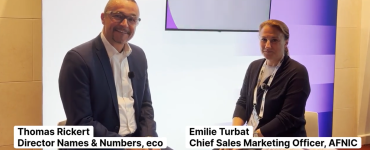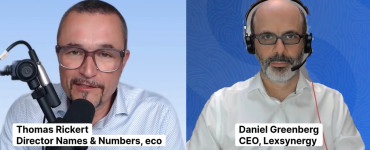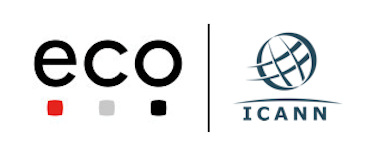The Internet is about to open up in exciting new ways. In 2026, the application period for a new wave of domain extensions, known as new gTLDs, will begin. This will create powerful opportunities for businesses, communities, and individuals to stand out online. Imagine web addresses that are shorter and more meaningful, and that instantly tell your audience who you are and what you stand for. This isn’t just a technical update; it’s an opportunity to build stronger brands, safer spaces, and more inclusive digital identities, including those in different scripts and languages. In a series of interviews, we speak with the people shaping this next chapter of the Internet so you can learn why the 2026 new gTLD program matters to you.
In this conversation, Pim Pastoors from Hello Registry shares how they combine decades of experience from the teams behind .nl and .ca to deliver a next-generation registry backend built on trust, resilience, and collaboration.
1. Can you explain, in plain terms, what a registry backend service provider does in the lifecycle of a domain name?
Running a TLD comes with technical responsibilities; we’ve got those covered. As your registry backend provider, we handle all ICANN requirements and help you connect with registrars. That way, you can focus on launching a TLD that’s built for success.
2. What differentiates your services from other backend providers?
Hello Registry is a joint initiative from SIDN and CIRA, two trusted operators behind .nl and .ca. With decades of experience running successful TLDs, we’ve built Hello Registry to share that expertise with others.
Our platform offers a seamless registry management experience, shaped by real-world feedback and designed to grow with you. When you join Hello Registry, you gain more than just a powerful platform; you become part of a community of forward-thinking registries. Together, we share insights, exchange ideas, and help each other thrive.
It’s not just about tech. It’s about building something great, together.
3. How do you guarantee uptime and resilience against failures or attacks (e.g., DDoS)?
Hello Registry supports over 11 million domain names across 11 TLDs. With that scale comes responsibility and, unfortunately, attention from bad actors. That’s why we’ve built multiple layers of protection around our registry infrastructure.
DNS is at the heart of everything we do. It ensures that domain owners – or registrants, as we call them in our industry – stay reachable online. We’ve been running DNS since 1986, with a track record of 100% uptime. This is made possible by our globally distributed DNS network, continuously monitored for performance and availability. We don’t just operate DNS; we share what we know. Our team regularly publishes papers and insights to help the Internet community better understand DNS and registry operations. Our registry platform is built for resilience. It runs across multiple data centers, includes DDoS protection, and is packed with security features. But most importantly, we don’t just defend against today’s threats, we anticipate tomorrow’s. Because we use our own platform, we’re deeply aware of the risks and committed to staying ahead of them.
4. What security certifications (e.g., ISO, SOC 2) or third-party audits do you undergo?
Independent audits and certifications strengthen the way we work. We believe in transparency and continuous improvement. That’s why we’ve embraced third-party audits as part of our standard operating model. In 2011, SIDN was the first registry in the world to be ISO27001 certified. CIRA followed closely after. In 2025, we transitioned to the ISO27001:2022 standard. We’re committed to raising the bar for ourselves. This is why we are now in the process of becoming SOC 2 compliant.
5. What is the biggest mistake companies made in 2012 that you recommend avoiding in 2026?
Back in 2012, many applicants benchmarked themselves against .com and the larger ccTLDs. This sparked ambitious business plans, driven by the excitement of entering a newly opened market. At the time, there was little clarity on how long it would take for a new top-level domain to go live, or what success might look like. Expectations were sky-high.
Now, more than a decade later, we have real-world data. Over 1,200 top-level domains have launched since then, giving today’s applicants a much broader and more realistic set of reference points. While many TLDs have performed well, few have met best case scenarios.
I expect to see more creativity in the upcoming round, but also more grounded, data-informed business plans. Applicants now have a clearer view of what works, what doesn’t, and where the real potential lies.
At Hello Registry, we’re here to help. With almost fifteen years of hands-on experience after the first round, we support applicants in refining their business strategies, turning ambition into sustainable success.
Company website: helloregistry.com
Company LinkedIn page: https://www.linkedin.com/company/helloregistry/about/
Explore the new gTLD Provider Directory and connect with trusted providers: https://international.eco.de/topics/names-numbers/new-gtld-provider-directory/




